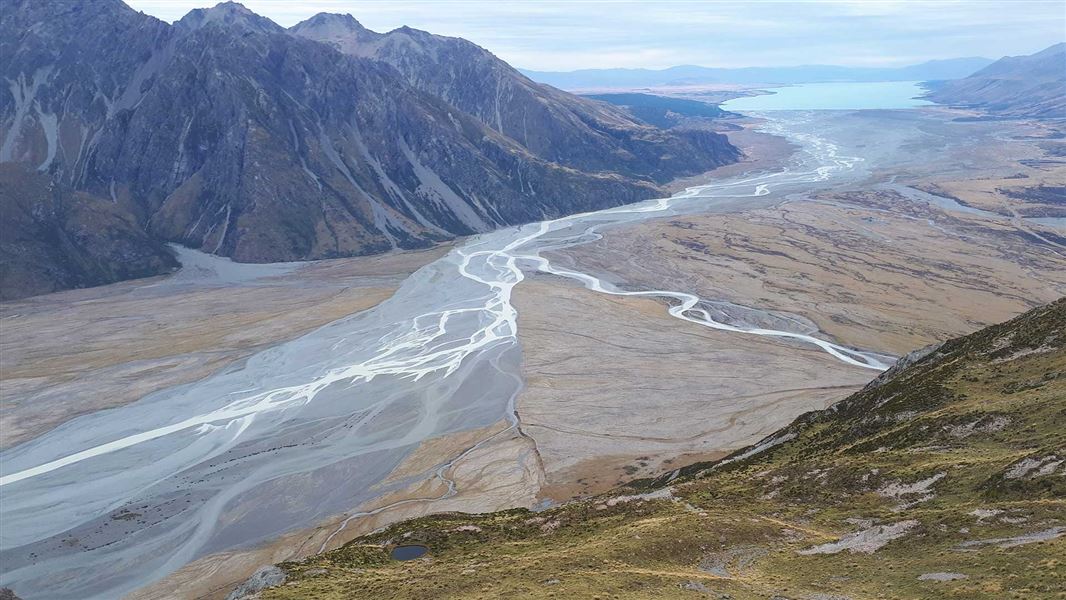Braided rivers are characterised by their wide gravel beds, numerous channels and highly variable flows. They are geologically unusual and support plant and animal communities that are found nowhere else in the world.
Plains of the upper Waitaki Basin were formed some ten thousand years ago, following the end of the last glaciation. As glaciers retreated, they left behind beds of gravels and boulders.
Rivers spilled out of the Tekapo, Pukaki, Ohau and Ahuriri catchments to deposit more gravels and silts. Together, these combined to form the flat inter-montane (between mountains) basin criss-crossed by meandering river channels that we now call the Mackenzie Basin.
The processes of geological uplift, erosion and alluvial transport continue to maintain our braided river and associated wetlands today. Only Alaska, Canada and the Himalayas have extensive braided river systems similar to New Zealand’s.
Some braided river plants and animals are only found in, or only breed in, the South Island’s upper Waitaki Basin. Project River Recoverywas set up to maintain and restore braided river and wetland systems in this region.
The upper Waitaki Basin’s braided rivers and adjoining wetlands are home to over 250 native plants, 27 mosses and liverworts and 35 lichens.
The upper Waitaki Basin's braided rivers are home to many invertebrates and several lizard and fish species. They are also a stronghold for several of New Zealand's most threatened birds.
Hydroelectric development, river engineering works, pastoral development, exotic weed invasion and introduced predators all harm braided river and wetland ecosystems.
Respect braided riverbeds. The plants and animals that live there need your help to survive.
